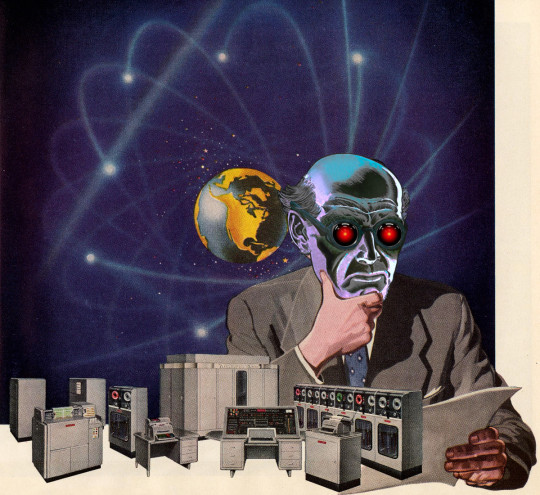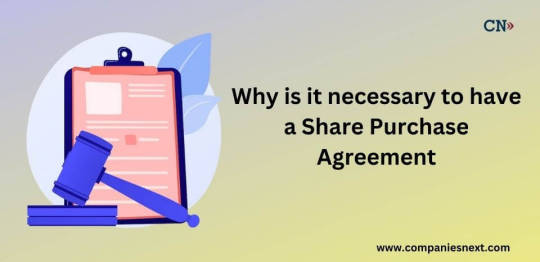#mergers and acquisition
Text
Forte Healthcare - specialized healthcare business planner and consultancy firm in Dubai

Forte Healthcare is a specialized healthcare business planner and consultancy firm established in the UAE. With an excellent track record of our team for over 23 years of active start-up experience in diversified sectors including healthcare, real estate & property development, and hospitality.
Our verticals include financial advisory and due diligence, design and infrastructure planning, project management, legal and compliance, operations management, and due diligence.
We have commissioned our projects across GCC, Africa, MENA, UK, Europe, and SE Asia regions, which provides us with substantial experience in managing large-scale operations and teams. It is important to have a specialized healthcare business consultancy firm looking at your business plans keeping in mind the consolidations happening in the healthcare market across GCC
Our track record shows that our team has achieved the highest level of EBIDTA growth since its inception making us the healthcare business planner of choice across the GCC.
#Healthcare Business Planner#consultancy firm#specialized healthcare#financial advisory#design and infrastructure planning#project management#operations management#Project Advisory#Best Healthcare Business Consultants in Dubai#Best Healthcare Business Consultants in EMEA#Healthcare Business Consultant#Mergers and Acquisition#dubai#uae#emea#gcc#asia#healthcare#health#healthcare business
2 notes
·
View notes
Text
Mergers and Acquisitions in HR Consulting: Navigating Change with Human Resource Dimensions

The Mergers and Acquisition process transactions can be complicated, but Human Resource Dimensions ensure a smooth change for your workforce. Our team carefully evaluates talent in both organizations, creates targeted communication plans, and enables a suitable culture. We minimize trouble, retain top talent, and ensure a successful outcome for your joint workforce. With Human Resource Dimensions, turn Mergers & Acquisitions in HR consulting challenges into opportunities for a good, more high-performing organization.
0 notes
Text
Health IT: Customer support software maker BirchAI acquired by Sagility

- By InnoNurse Staff -
BirchAI, a Seattle-based startup that develops software to facilitate customer support for healthcare organizations, revealed on Tuesday that it had been purchased by Sagility, a Denver-based health-tech company.
Read more at GeekWire
///
Other recent news and insights
Q&A: MediSim VR's journey in healthcare technology (CXOtoday)
Mobile health: Porto, Portugal-based health technology startup Tonic App raises €10.85 million Series A to reach the United Kingdom and Germany (EU-Startups)
Health insurance automation: Tennr secures $18M Series A funding (FinSMEs)
#birchai#sagility#mergers and acquisition#health tech#medtech#digital health#mhealth#mobile health#health it#customer support#tonic app#portugal#vr#education#training#medisim#india#tennr#automation#insurance#health insurance#insurtech
0 notes
Text
trying to figure out how to say this delicately. i do think that the pwhl is going to make some progress, and already the support for the league is showing how much of a market there is for women's sports even from a few years ago. but it's kind of been irking me to see so many posts that act like there has never been any arena for women's pro hockey before. like do you understand how many people — how many leagues!! — came before this to even make the pwhl a possibility. do you know how many people have fought tooth and nail for women's pro hockey for DECADES. i'm not saying don't support the league, but don't act like it's the perfect solution to a brand new issue
#idk i'm just thinking#how quickly people forget the outrage and devastation of the entirety of the phf being blindsided by the acquisition/merger#contracts erased. careers ended. lives uprooted.#yes women players are getting more money and more visibility! that's great!#but i can't support it wholeheartedly#i will support it because they've ensured it's the only option there is but it still feels kind of bad man#saw a post earlier that was like 'starting today. young girls will realize there's a future for them in pro hockey'#that's great! but it's not starting today!#it started with all the groundwork that's been happening for years and years and years#hockey#pwhl#phf
771 notes
·
View notes
Text
Big Tech disrupted disruption

If you'd like an essay-formatted version of this post to read or share, here's a link to it on pluralistic.net, my surveillance-free, ad-free, tracker-free blog:
https://pluralistic.net/2024/02/08/permanent-overlords/#republicans-want-to-defund-the-police

Before "disruption" turned into a punchline, it was a genuinely exciting idea. Using technology, we could connect people to one another and allow them to collaborate, share, and cooperate to make great things happen.
It's easy (and valid) to dismiss the "disruption" of Uber, which "disrupted" taxis and transit by losing $31b worth of Saudi royal money in a bid to collapse the world's rival transportation system, while quietly promising its investors that it would someday have pricing power as a monopoly, and would attain profit through price-gouging and wage-theft.
Uber's disruption story was wreathed in bullshit: lies about the "independence" of its drivers, about the imminence of self-driving taxis, about the impact that replacing buses and subways with millions of circling, empty cars would have on traffic congestion. There were and are plenty of problems with traditional taxis and transit, but Uber magnified these problems, under cover of "disrupting" them away.
But there are other feats of high-tech disruption that were and are genuinely transformative – Wikipedia, GNU/Linux, RSS, and more. These disruptive technologies altered the balance of power between powerful institutions and the businesses, communities and individuals they dominated, in ways that have proven both beneficial and durable.
When we speak of commercial disruption today, we usually mean a tech company disrupting a non-tech company. Tinder disrupts singles bars. Netflix disrupts Blockbuster. Airbnb disrupts Marriott.
But the history of "disruption" features far more examples of tech companies disrupting other tech companies: DEC disrupts IBM. Netscape disrupts Microsoft. Google disrupts Yahoo. Nokia disrupts Kodak, sure – but then Apple disrupts Nokia. It's only natural that the businesses most vulnerable to digital disruption are other digital businesses.
And yet…disruption is nowhere to be seen when it comes to the tech sector itself. Five giant companies have been running the show for more than a decade. A couple of these companies (Apple, Microsoft) are Gen-Xers, having been born in the 70s, then there's a couple of Millennials (Amazon, Google), and that one Gen-Z kid (Facebook). Big Tech shows no sign of being disrupted, despite the continuous enshittification of their core products and services. How can this be? Has Big Tech disrupted disruption itself?
That's the contention of "Coopting Disruption," a new paper from two law profs: Mark Lemley (Stanford) and Matthew Wansley (Yeshiva U):
https://papers.ssrn.com/sol3/papers.cfm?abstract_id=4713845
The paper opens with a review of the literature on disruption. Big companies have some major advantages: they've got people and infrastructure they can leverage to bring new products to market more cheaply than startups. They've got existing relationships with suppliers, distributors and customers. People trust them.
Diversified, monopolistic companies are also able to capture "involuntary spillovers": when Google spends money on AI for image recognition, it can improve Google Photos, YouTube, Android, Search, Maps and many other products. A startup with just one product can't capitalize on these spillovers in the same way, so it doesn't have the same incentives to spend big on R&D.
Finally, big companies have access to cheap money. They get better credit terms from lenders, they can float bonds, they can tap the public markets, or just spend their own profits on R&D. They can also afford to take a long view, because they're not tied to VCs whose funds turn over every 5-10 years. Big companies get cheap money, play a long game, pay less to innovate and get more out of innovation.
But those advantages are swamped by the disadvantages of incumbency, all the various curses of bigness. Take Arrow's "replacement effect": new companies that compete with incumbents drive down the incumbents' prices and tempt their customers away. But an incumbent that buys a disruptive new company can just shut it down, and whittle down its ideas to "sustaining innovation" (small improvements to existing products), killing "disruptive innovation" (major changes that make the existing products obsolete).
Arrow's Replacement Effect also comes into play before a new product even exists. An incumbent that allows a rival to do R&D that would eventually disrupt its product is at risk; but if the incumbent buys this pre-product, R&D-heavy startup, it can turn the research to sustaining innovation and defund any disruptive innovation.
Arrow asks us to look at the innovation question from the point of view of the company as a whole. Clayton Christensen's "Innovator's Dilemma" looks at the motivations of individual decision-makers in large, successful companies. These individuals don't want to disrupt their own business, because that will render some part of their own company obsolete (perhaps their own division!). They also don't want to radically change their customers' businesses, because those customers would also face negative effects from disruption.
A startup, by contrast, has no existing successful divisions and no giant customers to safeguard. They have nothing to lose and everything to gain from disruption. Where a large company has no way for individual employees to initiate major changes in corporate strategy, a startup has fewer hops between employees and management. What's more, a startup that rewards an employee's good idea with a stock-grant ties that employee's future finances to the outcome of that idea – while a giant corporation's stock bonuses are only incidentally tied to the ideas of any individual worker.
Big companies are where good ideas go to die. If a big company passes on its employees' cool, disruptive ideas, that's the end of the story for that idea. But even if 100 VCs pass on a startup's cool idea and only one VC funds it, the startup still gets to pursue that idea. In startup land, a good idea gets lots of chances – in a big company, it only gets one.
Given how innately disruptable tech companies are, given how hard it is for big companies to innovate, and given how little innovation we've gotten from Big Tech, how is it that the tech giants haven't been disrupted?
The authors propose a four-step program for the would-be Tech Baron hoping to defend their turf from disruption.
First, gather information about startups that might develop disruptive technologies and steer them away from competing with you, by investing in them or partnering with them.
Second, cut off any would-be competitor's supply of resources they need to develop a disruptive product that challenges your own.
Third, convince the government to pass regulations that big, established companies can comply with but that are business-killing challenges for small competitors.
Finally, buy up any company that resists your steering, succeeds despite your resource war, and escapes the compliance moats of regulation that favors incumbents.
Then: kill those companies.
The authors proceed to show that all four tactics are in play today. Big Tech companies operate their own VC funds, which means they get a look at every promising company in the field, even if they don't want to invest in them. Big Tech companies are also awash in money and their "rival" VCs know it, and so financial VCs and Big Tech collude to fund potential disruptors and then sell them to Big Tech companies as "aqui-hires" that see the disruption neutralized.
On resources, the authors focus on data, and how companies like Facebook have explicit policies of only permitting companies they don't see as potential disruptors to access Facebook data. They reproduce internal Facebook strategy memos that divide potential platform users into "existing competitors, possible future competitors, [or] developers that we have alignment with on business models." These categories allow Facebook to decide which companies are capable of developing disruptive products and which ones aren't. For example, Amazon – which doesn't compete with Facebook – is allowed to access FB data to target shoppers. But Messageme, a startup, was cut off from Facebook as soon as management perceived them as a future rival. Ironically – but unsurprisingly – Facebook spins these policies as pro-privacy, not anti-competitive.
These data policies cast a long shadow. They don't just block existing companies from accessing the data they need to pursue disruptive offerings – they also "send a message" to would-be founders and investors, letting them know that if they try to disrupt a tech giant, they will have their market oxygen cut off before they can draw breath. The only way to build a product that challenges Facebook is as Facebook's partner, under Facebook's direction, with Facebook's veto.
Next, regulation. Starting in 2019, Facebook started publishing full-page newspaper ads calling for regulation. Someone ghost-wrote a Washington Post op-ed under Zuckerberg's byline, arguing the case for more tech regulation. Google, Apple, OpenAI other tech giants have all (selectively) lobbied in favor of many regulations. These rules covered a lot of ground, but they all share a characteristic: complying with them requires huge amounts of money – money that giant tech companies can spare, but potential disruptors lack.
Finally, there's predatory acquisitions. Mark Zuckerberg, working without the benefit of a ghost writer (or in-house counsel to review his statements for actionable intent) has repeatedly confessed to buying companies like Instagram to ensure that they never grow to be competitors. As he told one colleague, "I remember your internal post about how Instagram was our threat and not Google+. You were basically right. The thing about startups though is you can often acquire them.”
All the tech giants are acquisition factories. Every successful Google product, almost without exception, is a product they bought from someone else. By contrast, Google's own internal products typically crash and burn, from G+ to Reader to Google Videos. Apple, meanwhile, buys 90 companies per year – Tim Apple brings home a new company for his shareholders more often than you bring home a bag of groceries for your family. All the Big Tech companies' AI offerings are acquisitions, and Apple has bought more AI companies than any of them.
Big Tech claims to be innovating, but it's really just operationalizing. Any company that threatens to disrupt a tech giant is bought, its products stripped of any really innovative features, and the residue is added to existing products as a "sustaining innovation" – a dot-release feature that has all the innovative disruption of rounding the corners on a new mobile phone.
The authors present three case-studies of tech companies using this four-point strategy to forestall disruption in AI, VR and self-driving cars. I'm not excited about any of these three categories, but it's clear that the tech giants are worried about them, and the authors make a devastating case for these disruptions being disrupted by Big Tech.
What do to about it? If we like (some) disruption, and if Big Tech is enshittifying at speed without facing dethroning-by-disruption, how do we get the dynamism and innovation that gave us the best of tech?
The authors make four suggestions.
First, revive the authorities under existing antitrust law to ban executives from Big Tech companies from serving on the boards of startups. More broadly, kill interlocking boards altogether. Remember, these powers already exist in the lawbooks, so accomplishing this goal means a change in enforcement priorities, not a new act of Congress or rulemaking. What's more, interlocking boards between competing companies are illegal per se, meaning there's no expensive, difficult fact-finding needed to demonstrate that two companies are breaking the law by sharing directors.
Next: create a nondiscrimination policy that requires the largest tech companies that share data with some unaffiliated companies to offer data on the same terms to other companies, except when they are direct competitors. They argue that this rule will keep tech giants from choking off disruptive technologies that make them obsolete (rather than competing with them).
On the subject of regulation and compliance moats, they have less concrete advice. They counsel lawmakers to greet tech giants' demands to be regulated with suspicion, to proceed with caution when they do regulate, and to shape regulation so that it doesn't limit market entry, by keeping in mind the disproportionate burdens regulations put on established giants and small new companies. This is all good advice, but it's more a set of principles than any kind of specific practice, test or procedure.
Finally, they call for increased scrutiny of mergers, including mergers between very large companies and small startups. They argue that existing law (Sec 2 of the Sherman Act and Sec 7 of the Clayton Act) both empower enforcers to block these acquisitions. They admit that the case-law on this is poor, but that just means that enforcers need to start making new case-law.
I like all of these suggestions! We're certainly enjoying a more activist set of regulators, who are more interested in Big Tech, than we've seen in generations.
But they are grossly under-resourced even without giving them additional duties. As Matt Stoller points out, "the DOJ's Antitrust Division has fewer people enforcing anti-monopoly laws in a $24 trillion economy than the Smithsonian Museum has security guards."
https://www.thebignewsletter.com/p/congressional-republicans-to-defund
What's more, Republicans are trying to slash their budgets even further. The American conservative movement has finally located a police force they're eager to defund: the corporate police who defend us all from predatory monopolies.

Image:
Cryteria (modified)
https://commons.wikimedia.org/wiki/File:HAL9000.svg
CC BY 3.0
https://creativecommons.org/licenses/by/3.0/deed.en
#pluralistic#coopting disruption#law and political economy#law#economics#competition#big tech#tech#innovation#acquihires#predatory acquisitions#mergers and acquisitions#disruption#schumpeter#the curse of bigness#clay christensen#josef schumpeter#christensen#enshittiification#business#regulation#scholarship
290 notes
·
View notes
Text
cute thing I have learned during this conference: a couple different players are working in the quantum computing space, and specifically working on encryption protection algorithms to defend against attacks---these algorithms are called "kyber" and "dilithium" respectively.
nerds.
#this is like a previous conference I attended where they discussed different merger&acquisition concepts#in terms of different courses of food. so there was the amuse-bouche the main course etc.#I remember that so well! a triumph of messaging really#.....also I know a lot more about technology than I thought I did. kind of impressed by myself#that I can at least keep up with discussions of encryption standards and interoperability/data cleansing etc.#no wonder the company has to secretly manipulate you
58 notes
·
View notes
Text
“Only a handful of companies control the cereal market. And the cost to consumer is really interesting because Americans are used to fewer choices. I'm thinking about the impact of Walmart on smaller businesses. The trade-off was that the prices were cheap. But in reality, we are actually paying more because we have less choice.
What's happened is when you have concentrated power over any market, those who have the power get to dictate wages to the workers and also what they pay to their suppliers. And in the food system, that would be farmers, ranchers. And if you look at what's happened in the last 40 years in the United States, we've had remarkably stagnant wages for ordinary Americans and we've had a huge decline in the number of farmers and ranchers and the middleman is able to take the profit.
And that's why you need competitive markets. That's what capitalism is supposed to be about, but what we really have is a form of corporate socialism. And once four companies control about 40% of a market, you don't really have competition anymore because they're able to signal to one another price increases.
They're able to signal to one another how much they want to pay suppliers. A good analogy would be, let's say you want to sell your house. If you're going to sell your house, you want 50 to 60 people really eager to buy it. But if there's only one or maybe two, you're much more likely to get a lower price. And that's what America's farmers and ranchers have now found. And it's devastated the countryside as a result.
But when we go to the grocery store, we go right down any major city street and we see several grocery stores, we actually think we're looking at different stores with different options. And that’s really not true.
You know, when you go to the supermarket, there are thousands of products and you think they're independent companies, but they're made by a handful of companies. The Biden administration right now is trying to block the merger of Kroger's and Albertsons.
These are the two biggest supermarket chains, but you wouldn't necessarily realize it because they operate under dozens of different names. So I'm just going to give you some of Kroger's, for example, supermarkets. Ralph's, Dillon's, Smith's, King's Super's, Fry's, QFC, City Market, Owens, JC, Baker's, Harris Teeter, Pick and Save, Metro Market, Fred Meyer, and then Albertsons's, Safeway, Vaughan's, Shaw's, Tom Thumb, United Supermarkets, Pavilions, Cars, King Foods, on and on and on.
So you think you have a choice of dozens of different supermarkets, but it's only two. And if this merger is allowed to go through, it'll only be one.”
—The illusion of choice and the oligopolization of the food industry
#politics#kroger#albertsons#grocery stores#oligopolies#capitalism#mergers#mergers and acquisitions#supermarkets#illusion of choice#market consolidation#krogers#enshittification
31 notes
·
View notes
Note
With Microsoft buying out Activision and IGN buying out Gamer Network both resulting in layoffs I have to ask how do companies avoid acquisition?
Honestly, there are only two requirements to avoid an acquisition:
The studio's controlling stakeholders/majority owners want the company to remain independent and do not want to cash out
The company remains financially stable enough not to need a bailout

If the studio ownership decides they want to retire or cash out, they will be open to opportunities to sell. This is usually something of an inevitability - we are human and life priorities change over time. Things might be good for a few years, but a life-changing experience like having children, the death of a loved one, or other life-altering events could easily change circumstances.

The vast majority of the time, it's because the company is already in dire financial straits and needs a bailout. If the company can't afford to keep things running, they'll either look for a bailout (typically in the form of acquisition) or they'll be forced to shut down and lay everybody off. If the company can't earn enough to pay its debts, employees, and overhead costs, it won't be in business for long.

That's really it. All acquisitions happen when either the first or the second requirement (or both) is no longer being met. Either the owners decide they want to sell or the company is in desperate need of money and must either sell or close. Many companies don't even get to secure a buyout, they often die because they can't find a buyer (or other new source of funding) and run out of money.
[Join us on Discord] and/or [Support us on Patreon]
Got a burning question you want answered?
Short questions: Ask a Game Dev on Twitter
Long questions: Ask a Game Dev on Tumblr
Frequent Questions: The FAQ
24 notes
·
View notes
Text
The situation with Tango Gameworks makes me so angry. Capitalism has mutated to a point where the art that hundreds of people worked together to make means NOTHING according to the greedy corporations. I swear these people would rather be dead than NOT sabotage creativity (as if Coyote vs. ACME and Batgirl weren’t proof). What happened to Tango Gameworks and Hi-Fi Rush is like some alternate timeline where Nirvana just broke up a year after Nevermind came out. Whenever another company “welcomes” another into “the family”, DON’T GET EXCITED. People got excited when Disney bought 20th Century Fox because “THE X-MEN ARE IN THE MCU, FINALLY!”. No joke, people were rooting for the rich getting richer. Basically guys, capitalism is a joke and workers deserve more. Phil Spencer, you used to be cool, dude. What happened?
#anti capitalism#if it ain’t halo or cod then we’ll take it out back and old yeller it#tango gameworks#mergers and acquisitions are a plague#microsoft#game pass is killing xbox#lay off the layoffs please#hi-fi rush#capitalists feel the same way about money the final boss song does:#the perfect drug is about money. didn’t know trent reznor was so based
22 notes
·
View notes
Text
i think fionna and cake's renewal is the funniest thing in the world if you consider the general history of adventure time
adventure time gets canceled before the story the showrunners were supposedly planning could get properly finished despite AT being a staple of CN for years and one of the most iconic shows on the network > cn gets merged with hbo max > somehow adventure time gets a small miniseries as an epilogue for some storylines > fionna and cake, a spin off about three characters who appeared in the show in 10 episodes total between them, is announced > its presumed to be a mini series just like its predecessor > it premiers to groundbreaking success and internet virality > known tv series canceler, hbo max, renews it for a second season > ?????????
#im not counting ice king as simon bc as f&c demonstrated theyre not quite the same person#and i'm not underestimating the amount of simon stans either but i feel he's had somewhat of a cult following before#and now has been firmly pushed into the mainstream#anyway. personally still reeling from all that#was it a merger or an acquisition i dont even remember and frankly who gaf
27 notes
·
View notes
Text
Forte Healthcare - Best Healthcare Business Consultants in Dubai

Excellent track record of over 23 years of active start-up experience. We have commissioned our projects in GCC, Africa, MENA, UK, Europe, and SE ASIA. and also gained substantial experience in managing large operations and teams and have delivered the highest levels of EBITDA growth in the GCC markets.
Our Healthcare Business Consultancy verticals include financial advisory and due diligence, design and infrastructure planning, project management, legal and compliance, operations management, and due diligence.
#Healthcare Business Consultancy#Project Advisory#Best Healthcare Business Consultants in Dubai#Best Healthcare Business Consultants in EMEA#Project Management#healthcare Business#Healthcare Business Consultant#Operations and Management#Mergers and Acquisition#Dubai#UAE#EMEA#GCC#ASIA#Operations Management#Healthcare#Health
0 notes
Text
When they inevitably make a marvel dc crossover movie, will it be a sharing situation like disney has with sony over spiderman, or will it be because disney and warner bros merge into one giga-conglomerate? I say merge because I think of them as roughly equal in scope, but let's be honest, it would be disney buying wb, not the other way around.
Hey, remember back in 2008 when WALL-E showed us a ludicrous world where a single company took over the entire planet and made it hostile to all life as we know it and held humanity hostage for centuries with brain numbing distractions to keep them docile? Crazy, right? That could never happen, certainly not by the 2100s!
#rant#disney#warner bros#wb#it's coming#sooner or later#it is coming#marvel#dc#crossover#merger#acquisition#2100s#22nd century#wall-e#bnl#buy n large#capitalism#late stage capitalism#end stage capitalism
39 notes
·
View notes
Text

I truly hate the fact that I accurately predicted something like this would happen back when Zaslav started cancelling everything.
Mergers fucking suck.
16 notes
·
View notes
Text
tony your mom psychologically tormented you and gaslighted you into hating her until you really DID hate her and now you try to date women who do the exact same thing to you
5 notes
·
View notes
Text
Mergers & Acquisitions in Thailand
Thailand has witnessed a surge in mergers and acquisitions (M&As) activity in recent years, driven by various economic factors and strategic considerations. This trend has been fueled by both domestic and international companies seeking to expand their operations, gain market share, and capitalize on the country's economic growth.
Key Drivers of M&A Activity in Thailand
Economic Growth: Thailand's robust economic growth, coupled with its strategic location in Southeast Asia, has made it an attractive destination for foreign investors.
Favorable Government Policies: The Thai government has implemented supportive policies to encourage foreign investment, including tax incentives and streamlined regulatory processes.
Rising Consumer Spending: The growing middle class in Thailand has led to increased consumer spending, creating opportunities for businesses in various sectors.
Strategic Acquisitions: Companies are seeking to acquire businesses with complementary products, services, or distribution networks to enhance their market position.
Synergy Benefits: Mergers and acquisitions can create synergies by combining resources, expertise, and customer bases, leading to cost reductions and revenue growth.
Popular Sectors for M&A Activity
Automotive: The Thai automotive industry has been a major target for M&A activity, with both domestic and international players seeking to expand their manufacturing capabilities and market share.
Real Estate: The booming real estate sector in Thailand has attracted significant investment, with foreign companies acquiring properties and developing projects.
Energy: The energy sector has been another focus of M&A activity, as companies look to secure access to resources and expand their operations in the region.
Technology: The technology sector has seen a rise in M&A deals, driven by the increasing demand for digital solutions and services.
Consumer Goods: The consumer goods sector has been a popular target for M&A activity, with companies seeking to tap into the growing Thai market and expand their product offerings.
Challenges and Considerations
While Thailand offers numerous opportunities for M&A activity, there are also challenges to be considered. These include:
Regulatory Framework: Navigating the regulatory landscape can be complex, requiring careful consideration of legal and compliance issues.
Cultural Differences: Understanding and adapting to cultural differences is essential for successful M&A transactions.
Due Diligence: Conducting thorough due diligence is crucial to identify potential risks and ensure a smooth integration process.
Valuation: Accurately valuing target companies can be challenging, especially in emerging markets.
Despite these challenges, Thailand's M&A market is expected to continue to grow in the coming years, driven by favorable economic conditions and increasing foreign investment. As the country's economy expands and its market becomes more sophisticated, M&A activity will likely play an even more significant role in shaping its business landscape.
#thailand#Mergers & Acquisitions in Thailand#corporate in thailand#corporate lawyers in thailand#lawyers in thailand
2 notes
·
View notes
Text
Demystifying Share Purchase Agreements: Understanding, Advantages, and Key Clauses

Understanding a Share Purchase Agreement (SPA): An SPA is not just a legal formality; it serves as a cornerstone in the business acquisition process. The buyer, in essence, takes on the company's obligations and assets, making due diligence imperative. Prior to finalizing the SPA, a term sheet is often created to discuss key clauses, simplifying the negotiation process.
Advantages of a Share Purchase Agreement (SPA):
Clarity of Transaction:
Provides transparency in the transaction, clearly delineating the proportion of shares allocated to the buyer or entity.
Rights and Liabilities:
Legally prescribes the rights and liabilities of all parties, ensuring clear definitions of roles and responsibilities.
Warranties:
All parties are covered by specific warranties outlined in the agreement, enhancing legal protection.
No Third-Party Involvement:
Being a legal contract between specific parties, the SPA eliminates the involvement of any third party.
First Point of Reference:
Serves as the primary point of reference in case of breaches or misunderstandings between parties in the future.
Major Clauses of Share Purchase Agreement (SPA):
Parties to the Agreement:
Clearly defines the seller, purchaser, and the company whose shares are being transferred, referred to as covenanters or guarantors.
Background:
Provides a factual background, leaving no room for errors, outlining the relationship between parties, the objective of the transaction, and details about the shares being transferred.
Consideration and Sale of Shares:
Details the structure of the sale consideration, specifying the number and value of shares, payment details, and pricing formula.
Conditions Precedent and Subsequent:
Exhaustively covers approvals, authorizations, and permits required before and after the execution of the transaction, including representations, warranties, and obligations.
Closing:
Establishes the closing mechanism, outlining the timeframe and actions to be taken on closing day, with a provision that closing occurs upon the satisfaction of condition precedents.
Covenants by the Parties:
Includes both negative and positive covenants, providing security to each party regarding their past and proposed actions related to the SPA.
Representations and Warranties:
Captures the capital structure of the company, the purchaser's right to contract, purchase, and ability to fulfill obligations, ensuring credibility of information.
Confidentiality:
Ensures that parties receiving confidential information keep it confidential and refrain from using it for prejudicial purposes.
Indemnification:
Specifies the limits of liability and the process for reimbursement of indemnity claims, a crucial clause in case of disputes.
Dispute Resolution and Arbitration:
Sets out the process for resolving disputes, either through the courts or via arbitration, with the decision of the arbitrator being final and binding.
Conclusion: In essence, the Share Purchase Agreement is a comprehensive document that not only confirms mutually agreed-upon terms and conditions but also specifies the intricacies of the share transfer process. From the type of shares being transferred to the price paid, the SPA is the cornerstone that ensures a smooth transition of ownership, laying the foundation for a successful business transaction.
#Share Purchase Agreement#Business Transactions#Legal Agreements#Business Acquisition#Corporate Law#Due Diligence#Business Contracts#Mergers and Acquisitions#Contractual Clauses#Rights and Liabilities#Confidentiality Agreements#Indemnification
2 notes
·
View notes